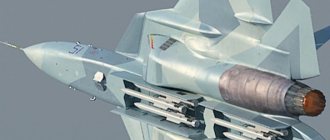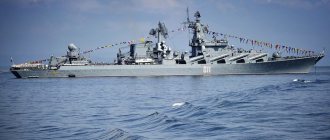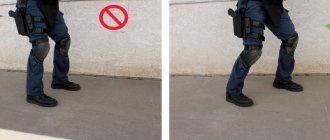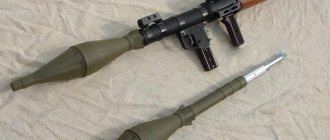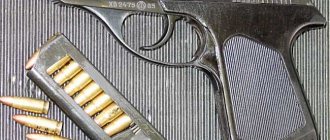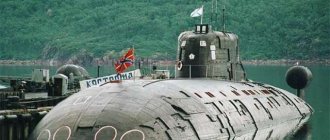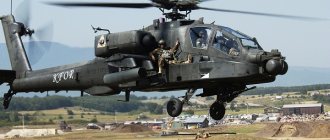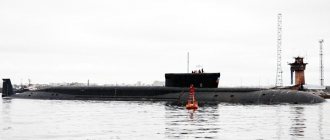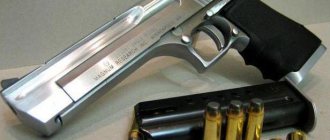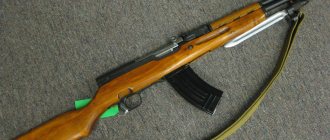In 1864, the first Russian submarine appeared. Since then, the construction and improvement of submarines in Russia has not stopped. Despite failed experiments and sunken ships, the country has more than 70 submarines for various purposes. Russia's submarine power is rivaled by Germany, the USA, the Netherlands, France and China. The last country joined the list of leaders in 2019.
About how many submarines there are in Russia and interesting facts - in the material of the 24SMI editorial office.
Egypt: 6 submarines
Egypt may have lagged behind other countries in some aspects of its economy, but its military, modernized with the support of the United States and China, is on par. Yes, yes, you heard right - China played an important role in this: the first submarines were acquired by Egypt from China, the subsequent ones from Germany. Egypt has two vast maritime borders - in the Red Sea and in the Mediterranean, so it simply needs ships from which it can hit both ground and underwater targets!
"Borey"
The development of this nuclear submarine began in the Soviet Union. It was finally designed and built in the Russian Federation. Its name comes from the name of the ancient Greek god of the north wind. In accordance with the plans of the creators, the Borey boat in the foreseeable future should replace the Akula and Dolphin class submarines. The length of the cruiser is 170 meters, displacement - 24 thousand tons. Borei was the first strategic submarine built in the post-Soviet era. First of all, the new Russian boat serves as a platform for launching Bulava ballistic missiles equipped with multiple nuclear warheads. Their flight range exceeds 8 thousand kilometers. Due to problems with financing and disruption of economic ties with enterprises located on the territory of the former Soviet republics, the completion date of the ship's construction was repeatedly postponed. The Borey boat was launched in 2008.
South Korea: 17 submarines
South Korea is a country that, unfortunately, is no stranger to military conflicts. That is why, in 2020, underwater units appeared in the South Korean army, which quickly became one of the most numerous in the world. The country is armed with submarines of types 209 and 214. In addition, the Koreans are rightly proud of the excellent training of their soldiers, including sailors.
Technical and tactical characteristics
The following are documented:
- crew – more than 50 people;
- displacement 2,325 tons (surfaced), 3,076 tons (submerged);
- length – up to 75 –;
- width – up to 10 –;
- draft – up to 7 –;
- power plant - one shaft, 2 diesel engines with a capacity of 3.65 thousand l/s and an electric motor - 5.9 thousand l/s, as well as 2 backup electric motors of 102 l/s;
- movement speed – up to 10 knots on the surface and up to 19 – underwater;
- cruising range - up to 7 thousand miles at a speed of 8 knots per hour under RPD (at periscope altitude) and up to 460 miles in a submerged position at a speed of 3 knots per hour;
- navigation autonomy – 45 days;
- immersion depth – up to 0.33 km;
- armament - 6 vehicles loaded with eighteen torpedoes or 6 more in the number of mines, 4 missile launchers (cruise missiles with a range of 0.5 thousand km) and short-range surface-to-air air defense systems (8 missiles). Various modern electronic equipment for detecting targets and maintaining their own stealth.
Interesting! The guides for the main shaft are made... of wood! Truly a special tree. It is a buckout native to Central America. It is very hard (1.3 thousand kg/m), saturated with guaiac resin, very wear-resistant, with natural lubrication. These indicators enable the shaft to serve for a couple of decades.
Japan: 18 submarines
If suddenly Japan and China begin to quarrel again, as they once did, China will have to face a serious arsenal! The most formidable among Japanese submarines are the Soryu class, a series of diesel-stirling-electric submarines that inspire fear in all enemies. They are able to stay below the surface of the water longer than other boats and are equipped with the most modern weapons!
Links
- Wikimedia Commons has media related to Submarines
- Non-nuclear submarines // TsKB Rubin
- Anaerobic power plants with Stirling engines - New Russian technologies for domestic submarine shipbuilding, energyua.com, June 22, 2007
- History of development and prospects of Russian non-nuclear submarines. Archived from the original on December 19, 2011.
- Kirillov, Nikolay
Germany offered submarines to Russia... nvo.ng.ru (January 29, 2010). Retrieved January 29, 2010. Archived August 25, 2011. — comparison of ECG with Stirling engines
Iran: 24 submarines
Iran may not be the most industrially advanced country, but the weapons in its arsenal are forces to be reckoned with. Unlike most countries in the world that use nuclear submarines, Iran is armed mainly with diesel-electric ships. Iran is currently developing the Fateh submarine, which will have improved combat characteristics.
LiveInternetLiveInternet
It's no secret that there are no things that are only positive or only negative. In some ways, submarines are no exception to this rule. Despite all the advantages of nuclear submarines, such as autonomy limited only by the “human factor” or excellent combat characteristics, they are expensive. And not only in terms of construction - their operation requires the creation of specific infrastructure for servicing nuclear power plants. But not all countries can afford such expenses, and they need a submarine fleet. In this situation, seemingly outdated diesel-electric boats (DEPL or DPL) will remain for a long time the only cheap and convenient alternative to nuclear ones. For reference, we recall that only two countries that have or are building submarines have abandoned diesel-electric ones: the USA and the UK. Russia, China and France (they should be joined by the end of the year by India, which is receiving the Russian nuclear submarine K-152 Nerpa) have a mixed submarine fleet consisting of both nuclear and diesel boats. All other countries operating submarines have only diesel-electric submarines.
The diesel-electric circuit today is in fact not at all outdated. Or rather, it is being developed and remains modern. The problems of diesel-electric submarines from the Second World War are a thing of the past. Due to the development “on all fronts” - diesel engines, batteries, electric motors and other equipment - it was possible to get rid of low underwater speed and short time in a submerged position. As a result, the “classical” scheme, combining diesel engines and electric motors as a direct drive for propellers, has not been used in new projects for several decades. Currently, the development of diesel-electric submarine power plants is proceeding along three paths: - full electric propulsion. In this case, the submarine does not have mechanical connections between diesel engines and propellers - the latter are always rotated by electric motors. Most boats with full electric propulsion use two engines: the main and economic propulsion; although in the most recent projects their role is played by a single motor with two operating modes.
— fuel cells. Further development of the previous system. Fuel cells based on various chemical compounds have made it possible to increase battery capacity and reduce noise. This system has not yet become widespread, but they predict a great future for it.
— Diesel submarines with Stirling engines. The use of this engine significantly increases the time the boat remains submerged without serious losses in other indicators. An interesting and noteworthy system, but just over a dozen such boats were built - the Swedish Gotland project, the French Saga, and the Japanese Soryu.
Swedish project "Gotland"
Japanese "Soryu"
Among foreign countries, Germany is considered the leader in the construction of diesel-electric submarines. So, for example, German Project 209 submarines have been supplied to 13 countries since 1971, and more than six dozen of them were built. Thus, "209" became the most commercially successful submarines in history. At the end of the 90s, Israel received three boats of Project 800 Dolphin, which was a modification of the 21st project to its requirements. The newer German diesel-electric submarines are Project 212 boats. The main thing that the Germans pay attention to when promoting their new boats is the electrical part of the power plant. It consists of nine proton-exchange fuel cells manufactured by Siemens and 144 silver-zinc batteries. The armament of Project 212 consists of six torpedo tubes of 533 mm caliber (ammunition - 12 torpedoes of various types) and anti-ship missiles. Instead of torpedoes, the boat can carry mines.
Four Project 212 boats have already entered service with the Bundesmarine, and two more are under construction. By order of Italy, a modification 212A was created: two such boats have already been delivered to the customer, two more will be delivered after 2013. An unpleasant story came out with the export version of the 212th project - project 214: at the beginning of this year, like a submarine, corruption stories from ten years ago surfaced. Then the burghers-contractors made “presents” worth fifty million euros to a number of Greek defense officials. The bribes did not seem to help and for several years the boat manufacturer, HDW, had problems delivering the lead Greek boat. In 2008, news appeared about Pakistan's intention to buy Project 214 boats for its fleet, but since then no new information has appeared.
The newest French diesel-electric submarine project is the Scorpene boats. Work on the project has been carried out by DCN since the early 90s, with Scorpene initially being made as export boats. By the end of the decade, France was joined by the Spaniards from Izar. As a result of the work, three modifications of the boat were created. The buyer can choose from:
— Scorpene Basic. A conventional diesel-electric boat armed with six torpedo tubes (18 torpedoes in stock) with the ability to fire anti-ship missiles. The boat can use SM-39 Exocet or Sub-Garpoon anti-ship missiles. — Scorpene Basic-AIP. The same "Scorpen-Basic", but with an air-independent power plant (VNEU) MESMA. This steam turbine unit, burning fuel in a combustion chamber (most likely ethanol, although diesel fuel is sometimes mentioned) in an oxygen atmosphere, evaporates water. The steam is supplied to a generator set with a power of up to 200 kW. After the generator turbine, the steam enters the condenser, where it is cooled by sea water. The cooled water flows back into the steam generator, etc. Thus, the steam turbine plant operates in a closed cycle. The necessary oxygen in liquid form is poured into a special tank at the base. — Scorpene Compact. As the name suggests, a compact version of the boat. It can be equipped with VNEU and is designed to operate close to the coastline.
American torpedo Mk-48
As a result, the customer can choose not only the type of power plant, but also the most suitable cabin option (they differ in the different composition of retractable equipment) and the number and type of diesel generators.
So far, four Scorpene boats have been built: two for Chile and two for Malaysia. Also, some time ago, France sold boats of the Agosta project. Of the 13 currently built, nine such boats are in the fleets of Spain and Pakistan.
The Germans did not escape problems either. In addition to corruption scandals, they also have purely technical troubles. For example, Project 214 boats turned out to be noisier than necessary. A number of sources mention that during tests of the lead boat for South Korea, a significant excess of noise was recorded compared to that declared by the manufacturer. After this, the Koreans had to install a propeller of their own design: this reduced the noise, but not by much. Another problem with German boats is related to batteries. Serial silver-zinc batteries have an unpleasant feature: if you discharge them to a level of 30-40% of the maximum charge, then under a number of conditions they may develop the so-called. memory effect. Of course, the battery can be used with it, but then the autonomy of the boat is seriously reduced. There are rumors that South Korea is even going to remove new “promising” German-made batteries from its 214 boats and buy Russian ones to replace them.
French boats, like all others, are also not blameless. So, for example, of the three versions of Scorpene, only the basic one is actually built. VNEU is not yet ready for mass production, and it is not particularly profitable. India has already requested that the Scorpions for their fleet have an air-independent power plant. France agreed, but almost doubled the terms and price. Sometimes there are also complaints about Scorpene equipment, but against the backdrop of price problems you don’t even notice them.
Another point where the economy comes into play in all its glory is weapons. For example, the American Mk-48 torpedo of the latest seventh modification (2008) costs $3.8 million. The previous version, the sixth, besides the American fleet, was purchased only by Brazil, and even that was unlikely to buy many torpedoes at that price. Other countries, namely Canada, Australia and the Netherlands, quietly use the 4th version of the torpedo (about 2-2.5 million dollars apiece). For comparison, the Russian USET-80 torpedo in later modifications costs about one million dollars, while its characteristics are not much inferior to its American competitor. Thus, it may simply be unprofitable to sink some missile boat that costs not much more with a torpedo for 3.5 million. And if we take into account the possibility of the torpedo missing the target...
"Varshavyanka" Indian Navy
As for missiles, there is some kind of parity here. The above-mentioned boats of various countries use three main types of missiles: Exocet, Sub-Harpoon and Caliber. In terms of range, Russian and American missiles are by far the leaders: their maximum launch range is 300 and 280 km, respectively. The maximum range of the Exocet is only 180 km, and that’s only for the latest modification (block 3). In terms of speed, weight, size and price parameters, the missiles are generally similar.
As you can see, there are no absolutely good and absolutely bad diesel-electric submarines on this planet yet. Some win in hardware, others in autonomy, but all are subject to the same problems. All modern diesel-electric submarines have restrictions on the duration of use of diesel units in order to avoid overheating. All countries making diesel-electric submarines have the same problems with batteries, due to their physical and chemical aspects. Finally, introducing new technologies is neither quick nor easy.
Nevertheless, diesel-electric submarines continue to be built and purchased. Despite all the shortcomings inherent in this class of military equipment, they are relatively cheap and profitable to operate. In addition, not all countries have their own nuclear technologies, and the transfer of all documentation related to them to a country without its own nuclear program... It is unlikely that anyone will sell such things along with submarines. So the geopolitical situation only contributes to the export prospects of diesel-electric boats.
The main type of domestic diesel-electric submarines at the moment are Project 877 Halibut boats from the late 70s. The total number of these boats, including export ones, exceeds four dozen. In the mid-90s, construction began on export diesel-electric submarines of Project 636 “Varshavyanka”, created on the basis of “Halibut”. Around this time, Project 877 was significantly redesigned into the 677 Lada.
Project 877 "Halibut"
Since the end of the 50s. In the USSR, the construction of diesel submarines (DPLs) with torpedo and missile weapons was resumed. After the completion of the Project 651 series of submarines in 1968, the construction of non-nuclear submarines continued under Projects 641B and 877, equipped only with torpedo weapons. However, since the mid-80s. DPLs with Harpoon anti-ship missiles (ASMs) launched from torpedo tubes (TA) began to be produced abroad.
In 1987, on the instructions of the Russian Navy, the Central Design Bureau for MT "Rubin" (later FSUE "TsKB MT "Rubin") began developing the Project 677 class diesel submarine "Lada". The feasibility of this was confirmed by the positive experience of many years of operation by the Russian Navy and the fleets of other states of the submarines pr. 613 (Whiskey), 641 (Foxtrot), 641B (Tango), 877 and 636 (Kilo). The project ended with the successful development of two versions of non-nuclear submarines pr.677 and 677E.
On December 26, 1997, two new diesel-electric submarines of the so-called 4th generation were laid down on the slipways of the Admiralty Shipyards state enterprise in St. Petersburg. The first of them is being built according to project 677 (code - “Lada”) for the Russian Navy, it received the number B-100 and the name “St. Petersburg”; the second - according to the export version of this project 677E (code - “Amur-1650”), this boat is intended for a foreign customer.
The development of Project 677 was started at the Rubin Central Design Bureau for MT in 1987 on the basis of the tactical and technical specifications of the Russian Navy. Although the architecture of the new submarine is close to the boats of projects 877 and 636, project 677 was created practically “from scratch”, and, according to the general designer of the Rubin Central Design Bureau for MT, Yu. N. Kormilitsyn, it does not use a single piece of equipment that was used previously on boats of the projects mentioned above.
The Project 677 submarine is made according to a two-hull architecture. The axisymmetric, durable body is made of AB-2 steel and has the same diameter along almost the entire length. The bow and stern ends are spherical in shape. The hull is divided lengthwise into five waterproof compartments by flat bulkheads; the hull is divided into three tiers in height by means of platforms.
The lightweight body is given a streamlined shape, providing high hydrodynamic characteristics. The fencing of the retractable devices has the same shape as that of boats of projects 877 and 636, at the same time, the stern empennage is made cross-shaped, and the front horizontal rudders are placed on the fence, where they create minimal interference with the operation of the hydroacoustic complex.
All living quarters of the submarine are located in the third compartment. There are cabins for all crew members: for the command staff - double cabins, for the commander - a cozy single, well-equipped cabin.
For meals there is a wardroom with a pantry. All food supplies are stored in special pantries, refrigerated and non-refrigerated. Newly developed galley equipment with small dimensions and energy consumption is capable of quickly preparing hot food while preserving the taste and nutritional qualities of the products.
Fresh water is stored in stainless steel tanks. This has a beneficial effect on maintaining its quality. Replenishing water supplies is possible using a water desalination plant that utilizes diesel heat. In general, the water supply is quite sufficient for both drinking and hygienic purposes (washing dishes, showers). Habitat conditions and supplies of fuel, food and drinking water provide autonomy for 45 days.
The boat has a diesel-electric main power plant, developed according to a full electric propulsion scheme. It consists of a diesel generator set located in the fourth compartment, consisting of two diesel generators with rectifiers, two groups of batteries with 126 elements each, located in the first and third compartments, as well as an all-mode rowing electric motor with permanent magnets of the SED-1 type power 4100 kW.
The selected power of the diesel generators allows not only “normal” charging of the battery, but also an accelerated charging mode specially developed by Russian specialists, which can significantly reduce the time the submarine is in the periscope position. The absence of a brush current collector increases the operating safety of generators.
The all-mode propulsion motor performs the functions of the main propulsion motor and the economic propulsion motor. It drives a seven-blade, low-noise, large-diameter propeller. The highest underwater speed reaches 21 knots; when moving on the surface, the boat develops a speed of 10 knots. The cruising range in RDL mode reaches 6,000 miles; in a similar position, when moving at economical speed, the boat can cover 650 miles. It should be noted here that, based on submarines of the Lada and Amur-1650 types, the Rubin Central Design Bureau has developed a submarine design with a combined main power plant consisting of a diesel-electric installation and an air-independent installation based on electrochemical generators of the hydrogen-oxygen type. This boat is distinguished by a significantly greater range of continuous underwater navigation, provided by an air-independent installation.
The boat has torpedo and missile weapons. It is equipped with 6 torpedo tubes of 533 mm caliber. The ammunition capacity is 18 units, which can include universal torpedoes, anti-submarine missile torpedoes, cruise missiles, and mines. It is possible to use Shkval high-speed anti-submarine missiles.
The firing system allows you to fire ammunition individually and in a salvo of up to 6 units. Readiness to fire two torpedoes from the duty torpedo tubes is measured in seconds. The mechanical loading device, traditional for Russian submarines, makes it possible to quickly automatically reload torpedo tubes and carry out the second and subsequent salvoes. The entire cycle of preparing the complex for the use of weapons and firing are automated and carried out from the operator’s console from the main command post of the submarine.
Coordination of the operation of all electronic weapons is ensured by the Lithium combat information and control system.
The hydroacoustic complex includes highly sensitive noise direction-finding antennas. The complex includes a bow and two side antennas at the bow end of the submarine. The antenna dimensions have been increased to the greatest possible extent. They occupy most of the surface of the nasal tip. None of the similar submarines in Russia or abroad have hydroacoustic antennas of such a large area.
In addition to the stationary antennas, the submarine is equipped with an exhaust towed hydroacoustic antenna with an exit point in the upper vertical stabilizer.
The low noise level of the component equipment being developed for submarines, the systematic use of the latest acoustic protection equipment, and original technical solutions make it possible to predict a reduction in submarine noise by 8-10 times compared to the previous generation Varshavyanka class submarines. The combination of the high efficiency of the hydroacoustic system with the low noise of the submarine itself ensures guaranteed proactive detection of enemy ships, including particularly low-noise submarines, at a considerable distance. This creates favorable opportunities for making optimal attack decisions.
The navigation complex includes an inertial navigation system and ensures the safety of navigation and the generation of data on the location and movement parameters of the submarine with the accuracy necessary for the use of weapons.
The submarine uses a commander's periscope with a night vision channel and a laser rangefinder. The set of radio communication equipment allows for reliable two-way radio communication with coastal command posts, ships, vessels and aircraft when in surface and periscope positions. To receive command messages when at great depths, there is an exhaust towed radio antenna. The antenna is released from a durable housing. The radar system with active and passive antennas located on one lifting mast device has a channel of increased stealth in active mode and provides complete information on both the surface and air conditions without unmasking the submarine.
According to the tradition established back in the days of the Soviet Union, all equipment and weapons of the Project 677 submarine are manufactured at domestic enterprises. True, the command of the Russian Navy does not rule out that, starting with Project 677 ships, it will consider the possibility of importing supplies of component equipment. In particular, air conditioning systems can be purchased for import. At the same time, the supply of imported equipment for the construction of export submarines 677E “Amur-1650” is envisaged already at the stage of designing the boats, taking into account customer requirements. Also, in order to most fully satisfy the requirements of customers, the Central Design Bureau MT "Rubin" carried out design studies of a whole family of diesel-electric submarines "Amur" with a displacement from 550 to 1850 tons. At the same time, the same fundamental design and layout solutions were adopted - both general ship and individual subsystems. The same or modified equipment was used.
For example, the main differences between the Amur-1850 submarine and the Amur-1450 submarine are the use of a more energy-intensive battery and a more powerful propulsion motor. This made it possible to significantly increase the cruising range, full underwater speed and navigation autonomy, and improve habitability. However, the displacement increased to 1850 tons.
In general, the prevailing opinion is that improvement of the 677 project should be carried out along the path of improving the electronics and power plant. As for the latter, the export version of the Lada, called Amur-1650, is currently participating in a competition announced by the Indian Ministry of Defense. One of the requirements of the Indian military is the presence of an air-independent power plant. “Amur-1650” is equipped with one and therefore is of certain interest to foreign customers. The volume of the contract that will be signed based on the results of the tender is estimated at almost 12 billion US dollars. It is quite possible that it was precisely because of such contracts that Rubin at one time began developing VNEU. If the updated export version of Project 677 turns out to be successful, then the Rubin Central Design Bureau of Marine Equipment will be able to more than recoup all the costs of the proactive development of VNEU. And the domestic fleet is unlikely to abandon such systems.
DPL pr.677 of the Lada class is distinguished by a high degree of stealth, which was achieved through the implementation of a large number of measures to reduce physical fields. This was facilitated, first of all, by the use of newly developed mechanisms and energy sources - diesel generators with alternating current instead of direct current and low-speed all-mode power propulsion, which made it possible to abandon the economic propulsion system. Compared to the submarine pr.877 (Kilo class), which is called a “black hole” for its low noise, the noise level of the Lada, according to the developers, is reduced several times. This, in combination with a highly effective sonar system, ensures guaranteed proactive detection of enemy ships, incl. and especially low-noise submarines, at a considerable distance.
Submarines of the “Amur” family (“Amur 950″, “Amur-1650″) are an export version of diesel-electric submarines of the “Lada” class and can be operated in any area of the World Ocean (except for areas with continuous ice cover) with any weather conditions in shallow and deep water areas. When creating them, the installation of equipment of domestic production and production of the customer, as well as third countries, is provided.
The submarines of the Amur family have automated control of all mechanisms and weapons, which can significantly reduce the number of crew.
The Club-S missile system may be part of a powerful arsenal of weapons. Unlike diesel-electric submarines pr.877EKM class "Kilo", which are in service with other countries, submarines of the "Amur" type can carry out a salvo launch of these missiles in up to 2 minutes, which sharply reduces the possibility of protection against them and increases the effectiveness of hitting targets.
SPECIFICATIONS
General characteristics Project name 677 “Lada” NATO code “Amur” (?) Developer TsKB-18 (TsKB-18 marine technology “Rubin”) Manufacturer “Admiralty Shipyards” (St. Petersburg) Number of boats in series 2 Crew, persons. 34 Autonomy 45 days Single-hull architecture, 5 compartments Hull material steel AB-2 Buoyancy reserve n/a Weight and dimensions Displacement above water, t 1950 Displacement underwater, t 2700 Length, m 67 Width, m 7.1 Average draft, m n/a Armament Armament 6 x 533 mm torpedo tubes, Igla-1M air defense missile system launcher Ammunition 18 533 mm torpedoes (SAET-60M and UGST) and missile torpedoes (RPK-6), 6 missiles Murena torpedo firing control device Radio-electronic equipment Hydroacoustic complex n/a Combat information and control system "Lithium" Navigation complex "Andoga" Radar complex n/a Radar detection station n/a Periscope n/a Engine and dynamic characteristics Diesel engine 2 xn/a Batteries 2 groups of 126 PC. Propeller electric motor n/a (power 3010 kW (4100 hp)) Economic propulsion propulsion n/a (one) Propellers low-noise fixed propeller Maximum surface speed, knots 10 Maximum underwater speed, knots 21 Operating diving depth, m 250 Maximum depth dives, m 300 Diesel fuel supply, t n/a
North Korea: 71 submarines
North Korea's submarine fleet is a strange phenomenon: the second largest in the world, it poses a tangible threat, but almost all of North Korea's weapons are outdated. Many of the units are designed using Soviet technology from the 1950s, but others are not much better. Perhaps they are coping with protecting their borders, but when they go out to the open sea they will certainly be defeated in a clash.
Steam and gas turbine
The only boat was equipped with a steam and gas turbine unit in addition to a diesel engine and an electric motor. In Soviet times, such a submarine was codenamed S-99. Its construction began in the USSR in 1951. After 5 years, she became part of the Soviet fleet.
To minimize resistance when moving underwater, artillery weapons were not installed on the submarine. The nose was equipped with torpedo tubes. Since there is only one copy of this boat in Russia, there is nothing to compare it with, but the designers highlighted its advantages. The submarine swims at high speed and over long distances at full speed. Disadvantage: when moving fast, the ship becomes too noisy, and this interferes with the functioning of standard sonar systems. The speed of the S-99 reaches 20 knots, which made it the fastest in the USSR.
Submarine C-99, photo: https://topwar.ru/
The submarine went to sea almost 100 times. When the steam and gas turbine unit was being launched, an explosion occurred on the boat. A hole of 80 cm appeared in the hull, but the cruiser made it to the base. The cause was an explosion of hydrogen peroxide. Funding was required to restore the ship. “Resurrection” was considered inappropriate and the submarine was dismantled for metal.
